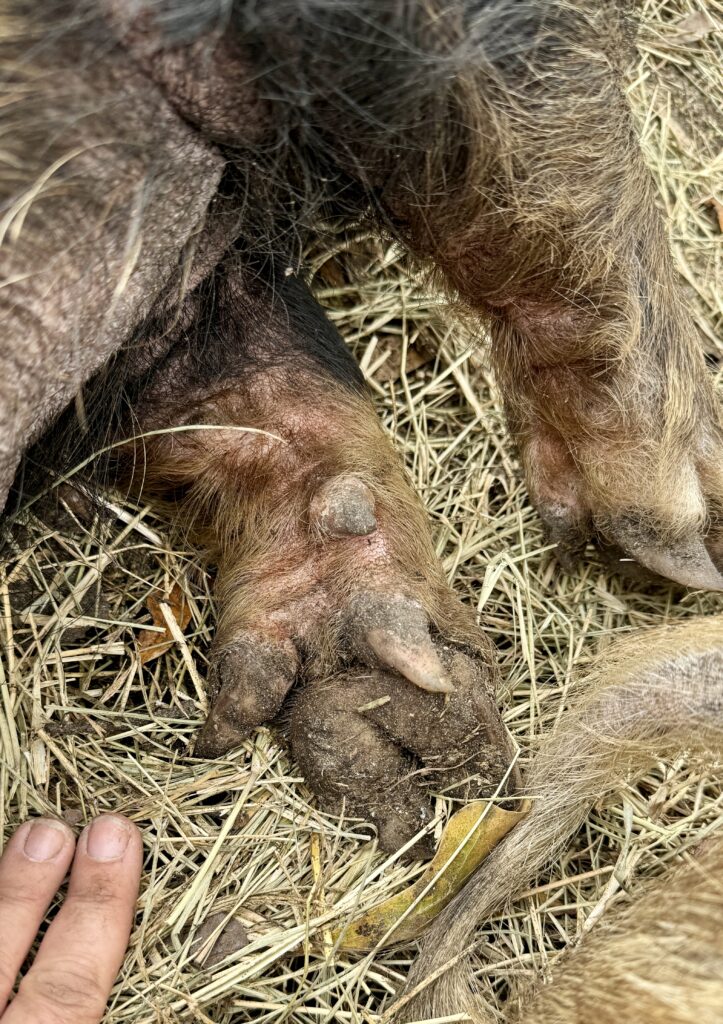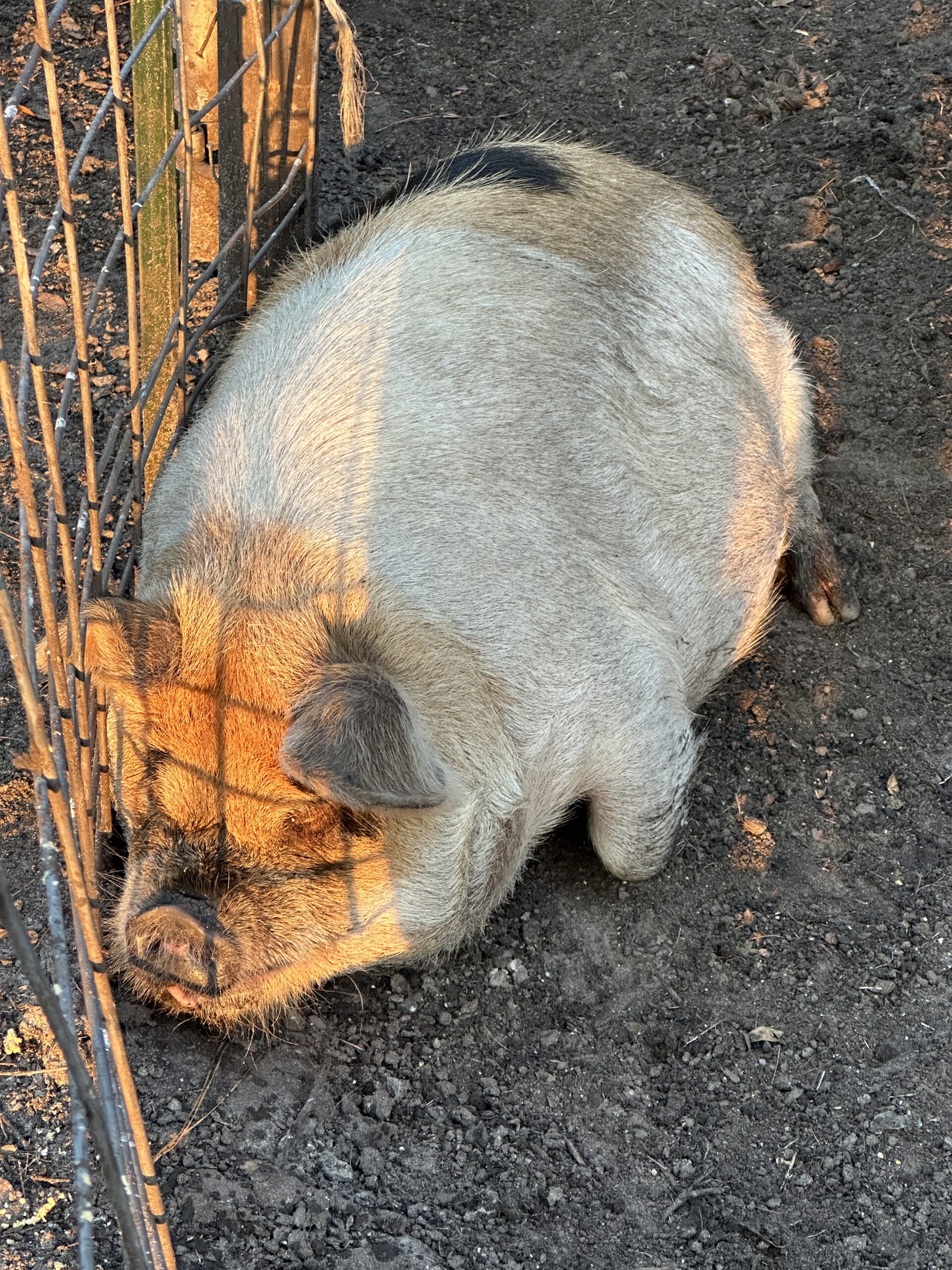Polydactyly in Kunekunes – When your pig has an extra toe…or two

When you think of polydactyls the first thought is likely of Hemingway Cats. Somehow extra toes on kittens seem adorable. Polydactyly in other species isn’t common, and not often thought of, especially kunekunes. While some may find it to be an interesting trait, it actually can be a sign of other issues.
What is a Polydactyl
Very simply polydactyl is when an animal is born with extra toes. In the case of pigs, more specifically Kunekunes, it can be an extra toe, dew claw, or even a double hoof. These extra appendages typically don’t keep the kunekune from walking or functioning but they can be an external symbol of other issues.
Genetic Mutation
We can all agree that extra toes are not a normal occurrence. Depending on the placement of the appendage, they do not hurt the animal and likely don’t need to be removed. The concern is with the fact that this is typically caused by genetic mutation. Kunekunes that are Polydactyl should not be considered breeding stock.
Iowa State University Animal Industry Report in 2006 followed a herd of purebred yorkshire pigs with polydactyly. Those pigs were retained for genetic testing and to see if the trait was passed on. In addition to creating 12 pigs with either extra toes or dewclaws, the population also had an extremely high number of stillborn and mummified pigs. They also showed marked differences in growth and reproduction rates.
Can It Be Passed On

The Oxford Journal has a study published that goes into more detail about Polydactyly in Pigs.
(Oxford Journal of Heredity ) They have found a genetic component and narrowed it down to specific genes as the carrier of this trait.
While the polydactyly is said to be a recessive trait a pig that carries it still has a genetic mutation that can be passed on and cause other issues including stillborns, mummified piglets, and size differences in piglets.
Probably, what occurs here is recessive polygenic (with one or several major genes) inheritance, although it is impossible to rule out a monogenic state with incomplete penetrance, which may cause visually undetectable weak expression of the trait.
Nikitin SV, Knyazev SP, Trifonov VA, Proskuryakova АА, Shmidt YD, Shatokhin KS, Zaporozhets VI, Bashur DS, Korshunova EV, Ermolaev VI. Unusual congenital polydactyly in mini-pigs from the breeding group of the Institute of Cytology and Genetics (Novosibirsk, Russia). Vavilovskii Zhurnal Genet Selektsii. 2021 Oct;25(6):652-660. doi: 10.18699/VJ21.074. PMID: 34782885; PMCID: PMC8558920.
What the above means is there is a possibility for the pigs to carry the mutation and have the growth, stillborn, and other issues without displaying the extra toe.
Causes
While inbreeding is the primary cause of cases of polydactyly, this trait can also be found randomly in herds, likely from the unknown recessive trait. That is why it is important to not use polydactyl pigs for breeding stock. These are not quality traits that you would want to pass down to offspring.
Treatment
Since this condition is not life threatening there isn’t really a necessary treatment as long as the extra toes aren’t affecting the pigs quality of life. As always, consult your veterinarian with care questions. Polydactyl pigs should not be breeding stock. They should be considered growouts for your meat program or as pets.






